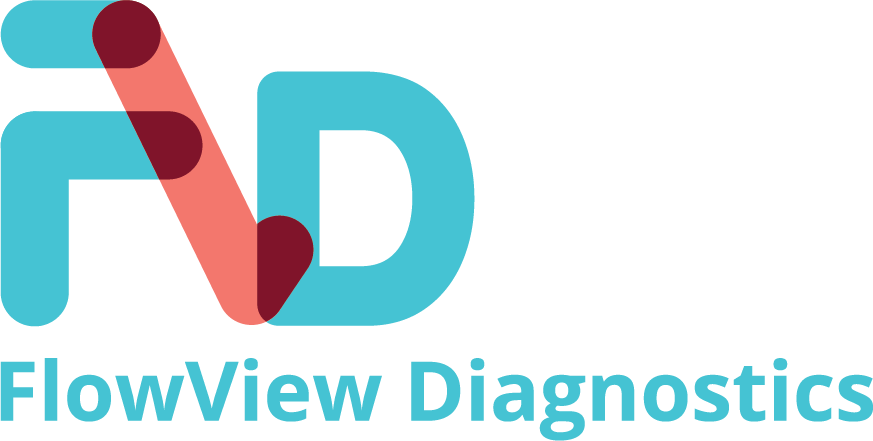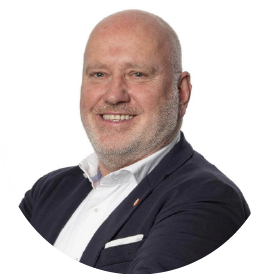EU RESOLVE project to establish optimal therapy for blood cancer
8 million EU-funding: “Flowview Diagnostics BV” successful with research consortium RESOLVE, which will define the golden standard in AML and CLL treatment using personalized diagnostics.

Acute myeloid leukemia (AML) and chronic lymphocytic leukemia (CLL) are among the most common forms of blood cancer in adults. Depending on the stage of the disease, patients receive chemotherapy, immunotherapy or a stem cell transplant. The diagnostic test “measurable residual disease” (MRD) can be used early during treatment to determine whether the leukemia is responding very well to treatment.
MRD is detectable when very sensitive diagnostic methods such as flow cytometry still detect leukemia cells in the body that cannot be detected with more traditional methods like the microscope. The RESOLVE research network consists of 21 partners from 8 countries, who will establish MRD as a personalized diagnostic tool, which will serve as a guideline for personalized treatment recommendations.
The consortium leverages several existing expert networks and partnerships with patient participation for the study. “If we confirm MRD as a biomarker, it will be used to guide the treatment of AML and CLL across Europe in the future”, says Professor Heuser. This could make more intensive therapies such as stem cell transplants unnecessary for some patients and shorten treatment times in others.
This could improve the quality of life for patients and reduce treatment costs at the same time. The European Union is funding the project with a total of eight million euros over five years across all consortium partners.
Equal chances of cure with fewer side effects
In flow cytometry, several hundred thousand cells can be examined simultaneously in a high-throughput process within a short period of time, thus enabling the detection of individual leukemia cells amidst healthy blood cells. “It’s like searching for a needle in a haystack or for a single red ball in a pool of white balls”, explains Professor Heuser. Our treatment goal is to no longer find a red ball, meaning that no more leukemia cells are present in the body.
“Building on this, we are investigating whether fewer medications or a shorter treatment for MRD-negative patients offer the same chances of cure – with fewer side effects.”
In some countries, MRD measurement is already used to individually assess the risk of relapse after successful cancer treatment and to precisely tailor further therapy accordingly. The researchers now want to rigorously examine the diagnostic method in a large clinical study involving 60 hospitals and develop standards for harmonized use of the MRD technology. “In this way, we aim to demonstrate the clinical, personal, and societal impacts of MRD-guided therapy”, emphasizes the hematologist.
Establishing MRD as the golden standard
MRD assessment based on flow cytometry will be then introduced as quickly as possible across Europe as the golden standard for personalized management of leukemia treatment. To achieve this, the researchers are utilizing existing infrastructures for laboratories and clinics and expertise from European research networks for CLL (“ERIC”) and for AML (“ELN-DAVID”).
In addition, representatives from politics, patient organizations, nursing, social sciences, and health economics are being involved. “We aim to create a platform for clinical routine that assists medical personnel in determining the individual risk of relapse for AML and CLL patients and avoiding overtreatment,” emphasizes the project leader. This is intended to ensure that all patients throughout Europe have access to this test within their national healthcare systems.
The RESOLVE project (Residual disease assessment in hematologic malignancies to improve patient-relevant outcomes across Europe) is part of the “EU Mission on Cancer” funding line, with which the European Union supports projects that aim to improve the lives of more than three million people with cancer by 2030. In addition to the contribution of FlowView Diagnostics, 20 other institutions and 60 hospitals from France, Germany, Greece, Israel, Italy, Poland, Spain, and The Netherlands are involved.
What is FlowView Diagnostics?
FlowView Diagnostics is a start-up founded in Heerenveen, The Netherlands in 2020. FlowView is developing a clinical decision-making platform that uses software and AI to do automated blood analysis for cancer cells and infections. The Asudes platform has been launched for commercial use to hospitals and laboratories in the second quarter of 2024.
About RESOLVE
More information on the project RESOLVE can be found here: https://cordis.europa.eu/project/id/101136502
Final thoughts
As the RESOLVE project progresses, our goal is to establish new standards in AML and CLL treatment through European collaboration and innovation. FlowView Diagnostics is committed to improving leukemia treatment by using personalized diagnostics, which guarantees that every patient gets the best possible treatment. Keep an eye on our LinkedIn page for further updates.
Have any questions? Leave us a message at info@flowview.eu or simply book a free meeting with our specialist here.

